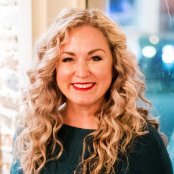Dr. Pfau’s Third Bucket: Rethinking Home Equity in Retirement Planning
Note: For mortgage professionals and financial advisors only and not intended for distribution to consumers or other third parties. Should not be construed as legal/financial advice. Consult with a financial advisor. This material has not been reviewed, approved, or issued by HUD, FHA, or any government agency.
If you’re like many financial advisors, you design an Income Bucket to buffer your client’s retirement income from the market. Let’s call that Bucket #1.
Bucket #2 is your combined investments bucket.
You might consider creating “Bucket #3.” This is different than the “3 Buckets” investment strategy you’re accustomed to—short, medium, and long-term investment buckets. Here, Bucket #3 is the Home Equity Bucket.
Home equity is that asset that sits on your client’s personal balance sheet in your financial planning software—illiquid and not utilized for your client’s retirement. It may be one of your client’s largest assets.
Would adding another resource boost the retirement of your clients?
Should that home equity resource be a type of forward mortgage, which adds to the expense burden of retirees? A home equity line of credit (HELOC), for example?
Or should it be a type of reverse mortgage, which has optional monthly mortgage payments and a potential additional income source?
Wade Pfau’s Financial Toolbox
Wade Pfau, PhD, CFA, RICP®, looked into this problem.
You may know Dr. Pfau from his many financial services articles, his position as a professor at the American College of Financial Services, and his role as Director of the Retirement Income Certified Professional (RICP®) program. He’s also written three books about retirement and a fourth titled Reverse Mortgages: How to Use Reverse Mortgages to Secure Your Retirement (Retirement Researcher Media, 2022).
In that book, Dr. Pfau presents extensive research on integrating reverse mortgages into a retirement strategy. He concludes that:
“While reverse mortgages can look expensive in isolation, they serve as a piece in a larger puzzle in which their costs can be offset by gains elsewhere in the overall financial plan, leading to better retirement outcomes… Gains created for investments will quite frequently exceed the costs of the reverse mortgage for a better overall outcome.” (Page 83)
Reverse mortgages, he generally concludes, are only expensive in the absence of value. Isn’t a fiduciary’s job to seek “better retirement outcomes”?
Look around your office. Few of your colleagues understand reverse mortgages or use Bucket #3. Wouldn’t you want access to the same financial strategies Dr. Pfau determined he needs in his financial toolbox?
Shouldn’t their financial advisor be the professional to discuss home equity retirement strategies with their clients?


